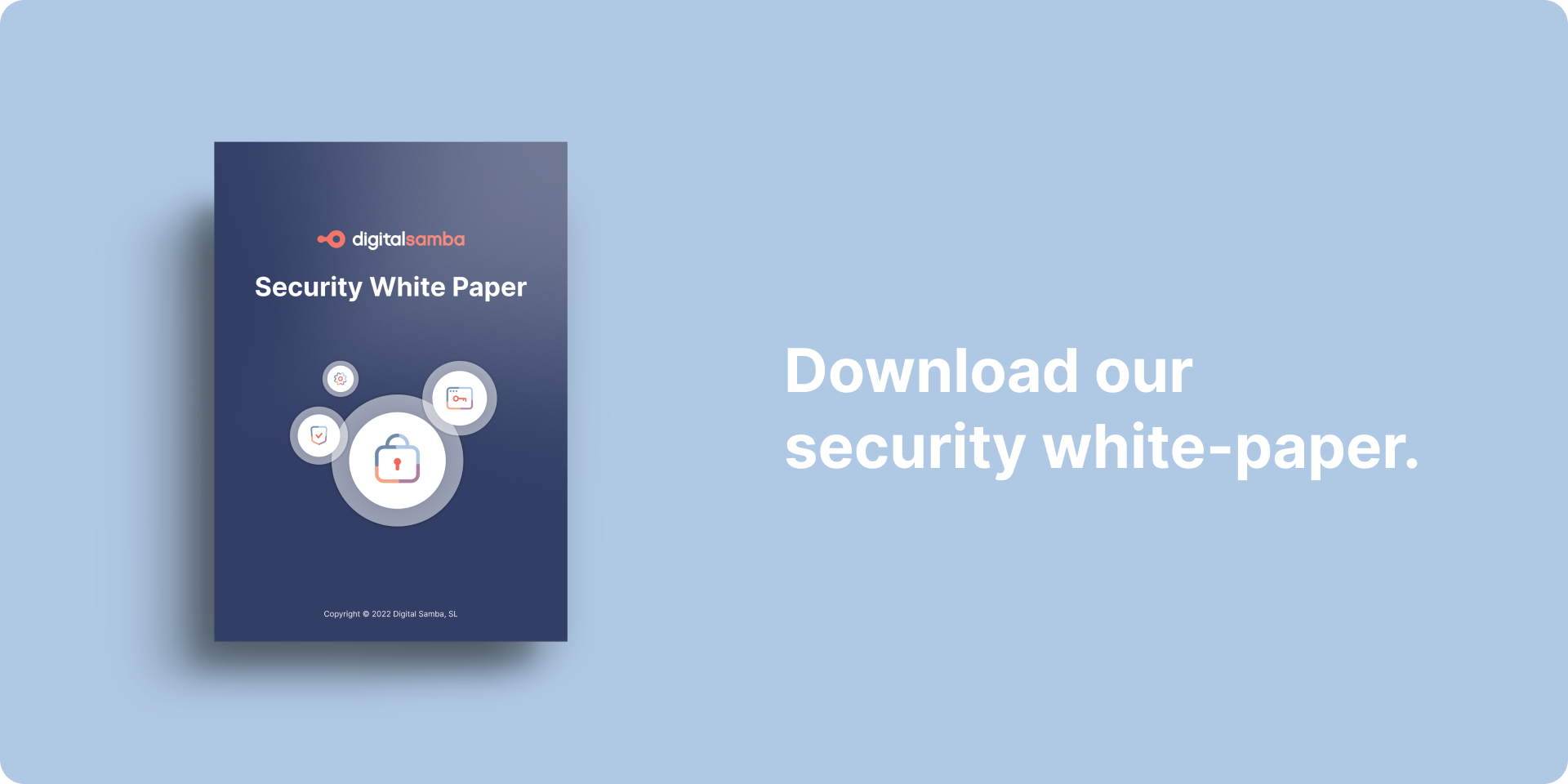Peer-to-Peer Video Calling: Best Practices for Developers
Video conferencing has become essential in today's digital age. It provides an effective way for people to communicate and collaborate remotely. One of the newest advancements in this technology is peer-to-peer (P2P) video conferencing. Rather than relying on servers, peer-to-peer (P2P) enables direct communication between endpoints.
In this article, we'll explore what peer-to-peer video conferencing is, how it works, its advantages and disadvantages, and best practices for using it.
By the end of this article, you'll understand why peer-to-peer video calls are the future of online meetings.
Table of Contents
- What is peer-to-peer (P2P) video conferencing?
- How P2P video conferencing works
- Advantages and disadvantages of P2P video conferencing
- Best practices for P2P video conferencing
- Final thought
What is peer-to-peer (P2P) video conferencing?
A peer-to-peer video conference is a type of video conferencing technology that enables direct communication between endpoints without intermediaries. In traditional video conferencing solutions, calls are typically routed through a centralised server that manages data transmission between endpoints. During the peer-to-peer video chat, data is transmitted directly between endpoints.
The big advantage of peer-to-peer calling is that it reduces latency and improves call quality. Direct data transfer between endpoints results in less lag time and fewer potential points of failure. What are the results? A smoother and more reliable video conferencing experience.
P2P video chat is more secure than server-based solutions. No centralised server can be completely safe from attacks.
End-to-end encryption can enhance security further, ensuring that only authorised parties can access the video stream.
How does P2P video calling work?

Peer-to-peer video conferencing software uses various techniques to achieve serverless communication. One common technique is establishing a direct network connection between endpoints using a User Datagram Protocol (UDP).
Another technique is "hole punching," which allows endpoints behind firewalls and network address translation (NAT) devices to establish direct connections.
During a P2P video conference, individual endpoints send and receive data from each other. This data includes video and audio streams and other data types such as peer-to-peer video screen sharing and private messages. Because the data is transmitted directly between endpoints, there is less latency and fewer potential failure points. The result is a smooth, reliable video conferencing experience.
Scaling P2P video conferencing to large numbers of participants is considered more challenging than on centralised platforms. Without a centralised server, delivering high-quality service and ensuring a consistent experience is more difficult.
Difference between server-based video conferencing and P2P video conferencing
While end-users may not notice the difference, understanding the differences between these two types of video conferencing technologies is essential for developers to make informed decisions about which platform to use based on their application's specific requirements.
Here's what you need to know about the difference between these two types of video conferencing:
Method of communication:
- Simple video conferencing relies on a central server to transmit data between participants.
- P2P video conferencing enables direct communication between devices without the need for a central server.
Quality and latency:
- P2P video conferencing typically provides better video and audio quality with lower latency than simple video conferencing.
User experience:
- End-users may not necessarily notice the difference in their experience using the technology between simple video conferencing and P2P video conferencing.
Development implications:
- Developers building real-time communication applications need to understand the underlying technology of video conferencing platforms to integrate them effectively into their applications.
- The differences between simple video conferencing and P2P video conferencing affect how developers design and build their applications, such as how they manage latency, scalability, and customisation.
In summary, the main difference between server-based video conferencing and P2P video conferencing is the method of communication between participants.
In server-based video conferencing, the data is transmitted through a central server, while P2P video conferencing enables direct communication between devices, resulting in better video and audio quality and lower latency.
Understanding the difference between these two types of video conferencing is essential for developers who are building real-time communication applications, as it can have implications for latency, scalability, customisation, and other aspects of their application.
Advantages and disadvantages of P2P video conferencing
There are many advantages to using P2P video conferencing over traditional server-based solutions:
- Reduced latency: P2P video conferencing reduces latency and improves call quality by enabling data transmission between endpoints instead of routing through a central server.
- Increased security: No centralised server is immune to attacks. Because of this, P2P video conferencing is sometimes considered more secure than server-based solutions. End-to-end encryption can be used to enhance security further.

The Digital Samba Security White Paper
Download now
- Improved scalability: P2P video conferencing can be more scalable than server-based solutions for smaller groups, as each endpoint establishes direct connections with other endpoints. This can result in more efficient use of network resources.
Despite these advantages, P2P video conferencing also has some disadvantages to consider:
- Network limitations: P2P video conferencing can be more demanding on network bandwidth and connectivity, as each endpoint must transmit and receive data from every other endpoint. This can lead to network congestion and reduced call quality.
- Security concerns: While P2P video conferencing can be more secure than server-based solutions, it's important to ensure that end-to-end encryption is used and all endpoints are properly authenticated.
- Limited scalability: P2P video conferencing presents a challenge to developers looking to scale to larger groups of participants. In this respect, the decentralised nature of P2P becomes a disadvantage.

P2P video conferencing is a powerful tool for enabling direct communication between endpoints. The benefits of P2P video calls include reduced latency, boosted security, and enhanced scalability.
Developers should be fully aware of the advantages and disadvantages of P2P video conferencing before selecting a video conferencing solution.
8 Tips for choosing the right P2P video conferencing platform for developers

Video conferencing has become an essential part of our daily lives, and more developers are integrating it into their applications. However, choosing the right P2P video conferencing platform can be a daunting task.
Here are 8 tips to consider when choosing a P2P video conferencing platform to help developers integrate video conferencing into their applications.
- Use an API-first platform
- Multiple SDKs
- Leverage open standards
- Enable customisation
- Monitor call quality
- Scalability
- Latency Optimisation
- Comprehensive Documentation
- Developer support
By following these tips, developers can find a video conferencing platform that suits their needs and provides the necessary features to create seamless real-time communication experiences.
- Use an API-first platform: Choose a P2P video conferencing platform with a well-documented API. Comprehensive documentation makes it easier for developers to integrate video conferencing into their applications.
- Multiple SDKs: Choose a platform that supports multiple video SDKs. They should cater to several programming languages.
- Leverage open standards: Use a platform that supports open standards like WebRTC so developers can build real-time communication applications without plugins or downloads.
- Enable customisation: A platform that lets you customise the user interface, authentication and other features will ensure you match your app's branding requirements.
- Monitor call quality: Choose a platform that allows you to measure call quality and identify issues and bugs in real-time.
- Scalability: Determine the number of participants your app intends to handle and choose a platform that can scale to your desired number of participants. This will ensure that your video conferencing experience is seamless, regardless of the number of participants.
- Latency Optimisation: Minimise latency by adopting adaptive bitrate streaming and network traffic prioritisation techniques. These techniques will improve the video and audio quality of your conferencing experience.
- Comprehensive Documentation: Always choose a platform that provides comprehensive documentation for its APIs, SDKs, and other features. This will make it easier for developers to integrate video conferencing into their applications.
- Developer Support: Choose a platform that provides developer support via forums, chat, and email. This will help developers troubleshoot problems and answer technical questions, ensuring that your video conferencing experience runs smoothly.
Final thought

P2P video conferencing is a powerful tool for effective communication and collaboration. Potential technical issues and connectivity problems should be considered before deciding on a platform. Adhering to P2P video conferencing best practices will help you get the most out of your P2P solution.
When selecting a P2P video conferencing platform, consider user experience, security, scalability, integrations, and support the platform offers. To experience Digital Samba’s secure and reliable P2P solution, sign up for a demo here.
P2P video conferencing is valuable for maintaining remote collaboration and connections. Using it effectively allows you to communicate and collaborate securely and reliably.
Share this
You May Also Like
These Related Stories

Understanding P2P, SFU, and MCU WebRTC Architectures

What is WebRTC Signalling?


